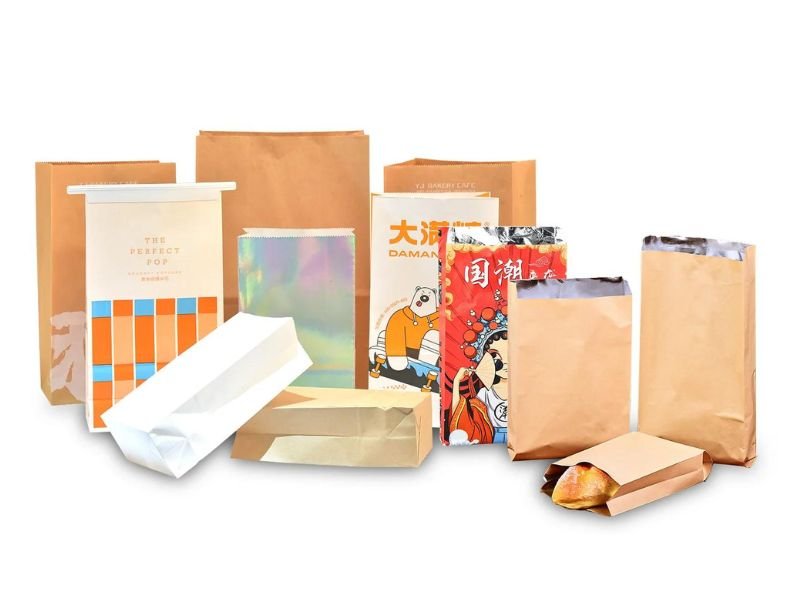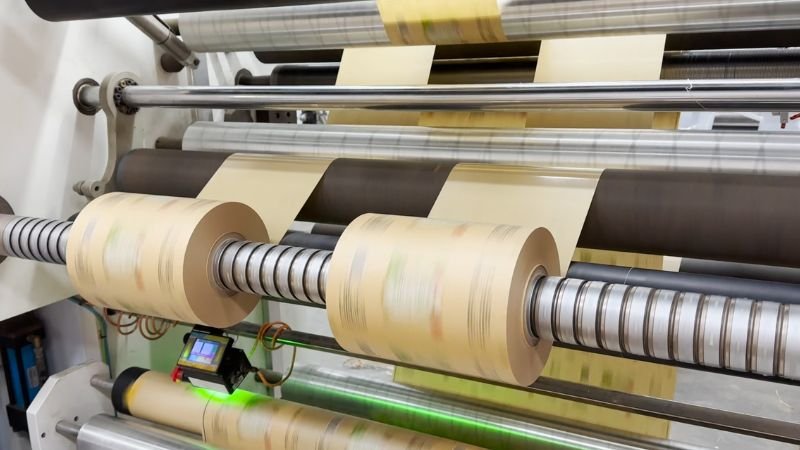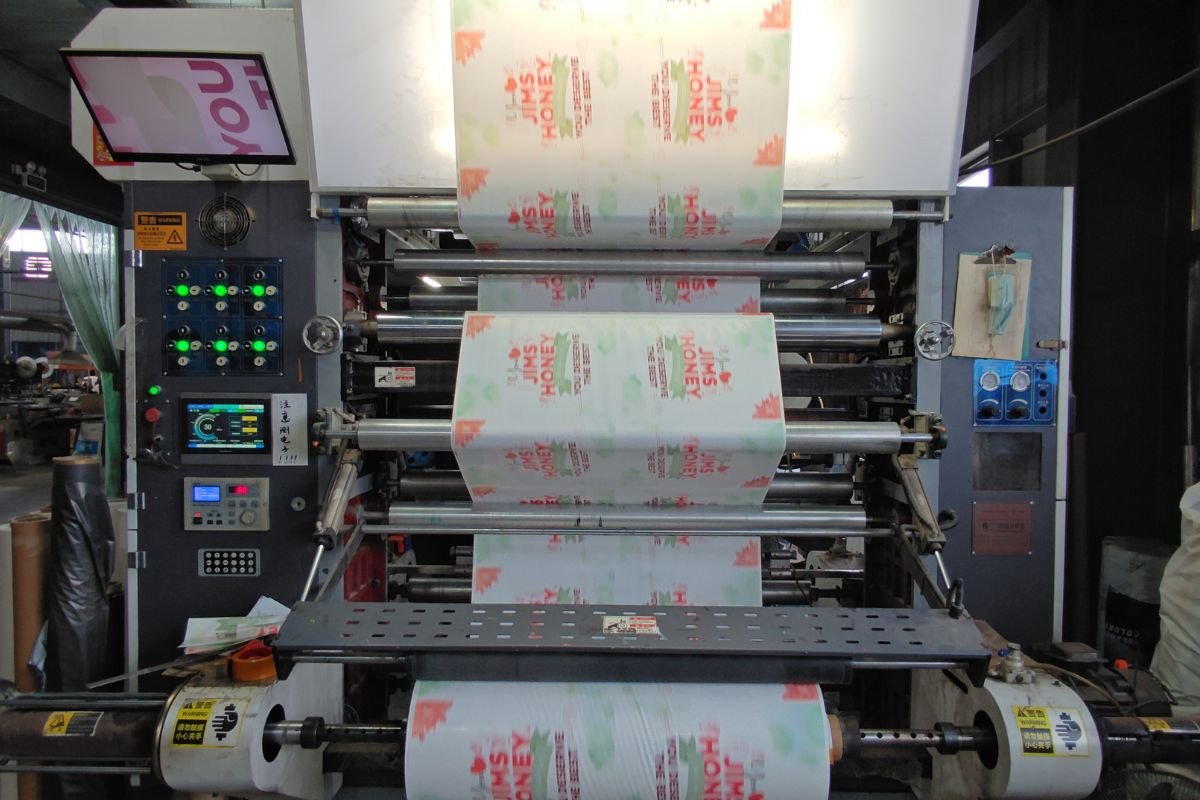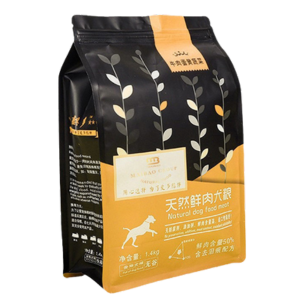You’re sourcing paper bags. But before placing that massive bulk order, a question pops up — how much does each bag actually weigh? Whether it’s for shipping costs, storage estimates, or environmental calculations, bag weight matters more than you’d think.
A typical paper bag weighs between 5 to 120 grams depending on its size, paper thickness (GSM), structure, and handle design. Lightweight flat bags for sandwiches might weigh just 5–10 grams, while large square-bottom bags with handles can go up to 100+ grams.
Let’s dig deeper, because the numbers can tell you a lot about quality — and cost.
What Determines the Weight of a Paper Bag?
We’ve made millions of paper bags. Literally.
And if I had a dollar for every time someone asked, “Why does this one weigh more?” I’d probably need fewer bags and more vaults.
Here’s what affects paper bag weight:
- Paper type and GSM: Kraft paper (white or brown) ranges from 60 GSM to 200+ GSM. Heavier GSM = thicker paper = more weight.
- Bag size: Bigger bag = more paper used.
- Handles: Flat paper handles weigh less than twisted ones. Add glue and reinforcements — the grams add up.
- Lamination or coatings: PE coating, gloss, or matte lamination increases both durability and weight.
Average Weight of Common Paper Bag Types
Here’s a table straight from our production floor:
| Bag Type | Dimensions (approx.) | GSM | Weight (grams) |
|---|---|---|---|
| Flat paper sandwich bag | 15×20 cm | 60–70 | 5–8 g |
| Small takeaway kraft bag (no handle) | 20x25x10 cm | 70–90 | 15–25 g |
| Medium square-bottom bag (twisted handle) | 30x25x15 cm | 100–120 | 45–65 g |
| Large shopping bag (with handle) | 40x35x15 cm | 120–150 | 80–120 g |
| Laminated luxury gift bag | 35x25x10 cm | 150+ + PE | 100–150 g |
These numbers are useful not just for freight estimates, but also for calculating carbon footprint, storage space, and unit cost.
Why Bag Weight Matters for Shipping and Logistics
A U.S. importer once told me: “Nick, we spend more on air freight than on actual bags!”
Ouch. That one stung — but it sparked a design pivot.
Because weight isn’t just about feel or quality — it impacts your entire supply chain.
For example:
- 1,000 flat bags at 10 grams each = 10 kg total.
- 1,000 handled bags at 100 grams each = 100 kg. That’s a big difference when you’re shipping 10,000+ units.
That’s why we always offer bag optimization — same strength, smarter structure.
Lighter Bags vs. Heavier Bags: Which Should You Choose?
Let’s break it down like a pros and cons list.
Lighter Bags (5–30g)
✅ Lower shipping cost
✅ Eco-friendlier (less material)
✅ Perfect for single-use, food-grade bags
❌ Less structural strength
❌ Not suitable for heavy items
Heavier Bags (50–120g)
✅ More durable, premium feel
✅ Supports heavier products
✅ Ideal for retail, gifts, wine
❌ Higher freight and storage cost
❌ Requires stronger glue and handle bonding
It’s all about the end-use. At GreenWing, we don’t push heavy unless it’s worth the weight.
How We Calculate and Control Paper Bag Weight
Some clients are super precise — like, calculator-on-the-table precise. I love it.
Here’s what we do:
- We measure average weight from 10-unit samples.
- We record real-time bag weight from our auto bag-making machines.
- We monitor GSM variation from the paper rolls we purchase.
- Every batch is checked against weight tolerances of ±5%.
Our clients get that data in every QC report.
Because surprises are great on birthdays — not during customs inspections.
Eco Impact: Why Lighter Paper Bags Can Be Greener
Here’s where it gets interesting.
More weight = more paper = more trees used.
So if we can reduce bag weight without sacrificing strength, the planet wins.
We’ve worked with food brands to cut bag weight by 15% through:
- Using recycled kraft blends
- Smart structural folds
- Reinforced gussets without extra layers
Less weight = less waste = more green points for your brand.
Your ESG team will love you.
What’s the Heaviest Paper Bag We Can Make?
You want heavy-duty? Challenge accepted.
We’ve manufactured bags that hold up to 25 kg, used for industrial packaging. These monsters use:
- 200 GSM paper
- Double-layer walls
- PE inner coating
- Reinforced bottoms and handles
They’re basically the paper bag version of a pickup truck.
But usually, for retail and food? Keep it under 120 grams. That’s the sweet spot.
Conclusion
Paper bags may look simple, but their weight tells a big story — about strength, logistics, cost, and sustainability.
Want to know how much your custom bag will weigh? Just ask us — we’ll even show you the grams.
Let me know if you’d like this article versioned for food delivery brands, retailers, or freight calculators. Or want to convert this into a downloadable product guide with visuals — happy to do it.







